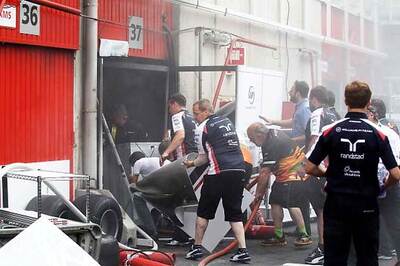
views
Unemployment is a perennial problem that has and will continue to bedevil all governments the world over. As far as India is concerned, the Centre for Monitoring of the Indian Economy (CMIE) has indicated that as of the first week of June this year, there has been a marginal improvement/uptick in jobs creation. The employment data for May 2022 reveals “a positive movement of labour at the sectoral level” and foresees continued macro-level stability.
The employment rate in May 2022 was pegged at 37.07% as opposed to 37.05% in April, and CMIE says this is “the result of a small fall in the labour participation rate, but a larger fall in the unemployment rate.” This means that fewer people were seeking jobs in the month of May as compared to the previous five months when the jobs crisis was at its peak.
While 7.83% of those seeking employment in April were left unemployed, in May, only 7.12% were jobless and this is a good sign. However, the not-so-good sign is that the labour participation rate which was 40.19% in April, fell to 39.91% in May.
The small increase in the employment rate translates into a little over a million people getting jobs i.e. 404 million in May as compared to 402.9 million in April 2022. This is the second consecutive month of employment increase, according to CMIE data (In April nearly seven million people got jobs).
In its twin quest to address the issue of joblessness head-on as well to create “younger and leaner” army, navy and air force, the Centre has announced a new scheme called Agnipath for recruitment of soldiers, sailors and airmen into the country’s armed forces. Essentially, this scheme is based on the ‘Tour of Duty’ concept in which the duration of service of soldiers and their equivalents in the navy and air force is reduced so as to maintain a youthful profile in the defence forces.
Recruits known as ‘Agniveers’, in the age group 17.5 years to 23 years, after recruitment, will serve for four years, including a six-month training period. At the end of this period, 75% of them will be released from service with a lump-sum package and an option to avail bank loan to set them up in an alternative career. Only 25% of each recruited batch will be rehired to serve for 15 more years. To facilitate post-service employment of such personnel, those not retained would get priority in government jobs.
This announcement with regard to short service recruitment (SSR) has triggered an intense debate and angst, with those in favour saying it’s an idea whose time has come, and that any unforeseen issues that impede efficient implementation of this scheme would be quickly resolved by the system. They cite the ultimate reduction in average age of soldiers from 32 to 26 years due to the SSR as a major advantage that will enhance battle efficiency. Moreover, since this scheme will not entail pension disbursement, more funds would be available for modernising the armed forces.
Those against this scheme have cited several reasons such as functional problems at unit and subunit levels as well as adverse impact on morale of soldiers. They also feel that it’s unfair to utilise the services of a person for four years and then leave him out in the cold and foresee a major job crisis four or five years down the line. So, for them, this is an extremely radical and unacceptable change for an institution that swears by tradition and follows a system based on non-negotiable uniformed order.
Many countries have already adopted the SSR system. So, being a tried and tested arrangement, there is no need to be suspicious as far as efficacy of this scheme is concerned. It’s a path-breaking initiative for recruiting soldiers, sailors and airmen for the armed forces, and as such mental flexibility is a must for any rational evaluation of this scheme.
The positives for the country are having a much younger and leaner armed force, a saving on pension outflows and other lifelong benefits, which currently form a huge chunk of the annual defence budget. It also allows for British-introduced armed forces regiments to be open to all recruits, irrespective of the state they belong to, the mother tongue they speak, or which caste they are from. The government hopes to hire 46,000 ‘Agniveers’ in 2022.
The negatives are concerns over job security, lack of career opportunities after four years and non-eligibility for lifelong pension and benefits post exit. Some ex-servicemen have warned it would be disastrous to disrupt or overhaul time-tested institutions just to save money under the All India All Class (AIAC) recruitment scheme, but this is more of an emotional rather than rational assessment.
The global defence (warfare/conflict) environment is undergoing a sea change, with greater emphasis on non-kinetic warfare in the cyber-tech realm along with extensive use of artificial intelligence. Introduction of new state-of-the-art weaponry naturally will lead to a reduction of the number of boots on the ground; and therefore, the necessity for leaner and better equipped armed forces is unavoidable.
‘Agnipath’ is indeed a wonderful idea whose time has come.
The author is Editor of Brighter Kashmir, Author, TV commentator, political analyst and columnist. The views expressed in this article are those of the author and do not represent the stand of this publication.
Read all the Latest News, Breaking News, watch Top Videos and Live TV JAC Board Exam Results Kerala Plus Two (+2) Results here.




















Comments
0 comment